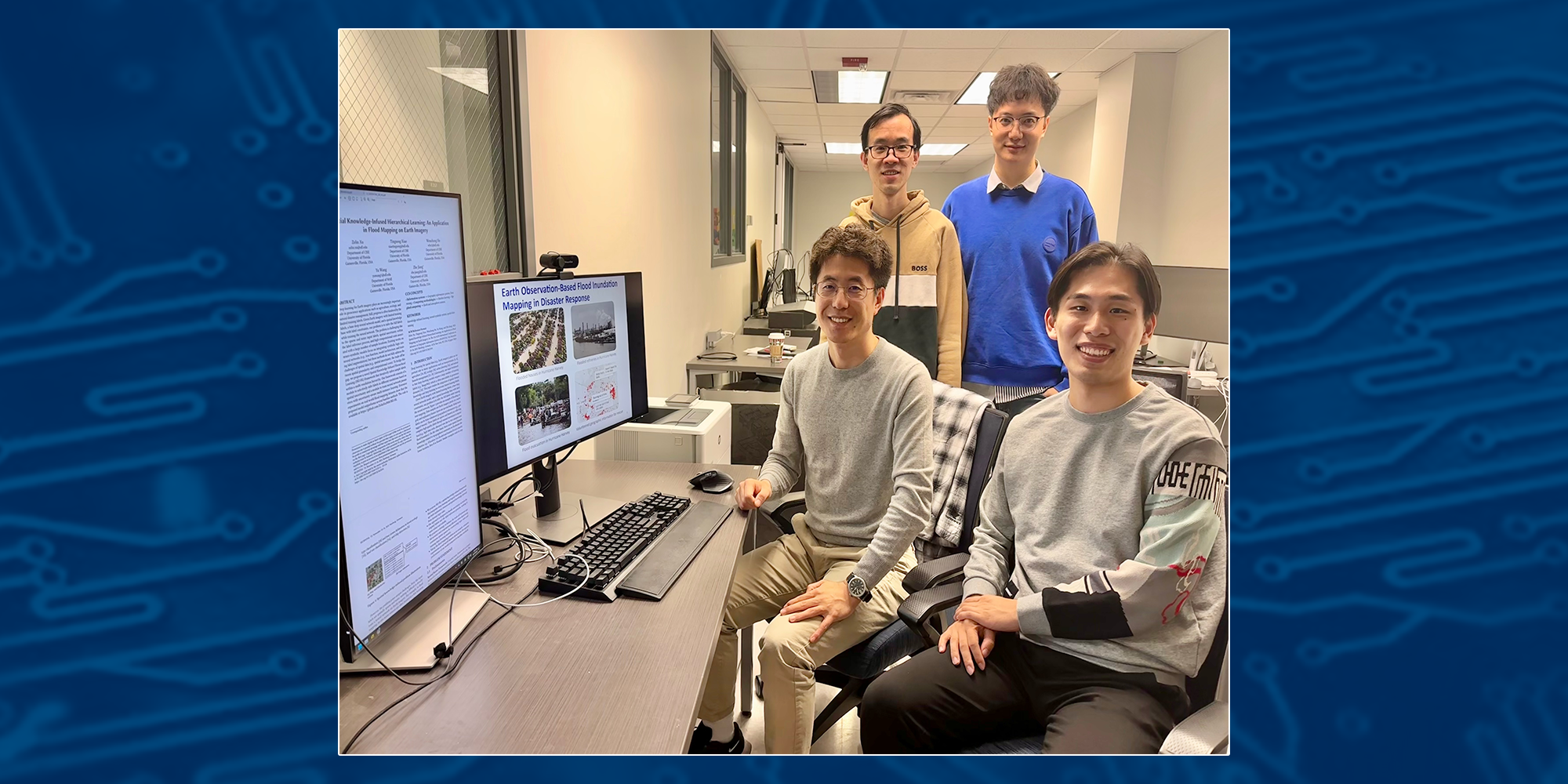Zhe Jiang, Ph.D., an assistant professor in the Department of Computer & Information Science & Engineering (CISE), and his team recently received the best paper award at the 31st Association for Computer Machinery SIGSPATIAL International Conference on Advances in Geographic Information Systems (ACM SIGSPATIAL). Their groundbreaking research uses spatial knowledge-infused deep learning to develop a system that can identify and map flooding from analyzing images.
“Our method addresses the limitations of deep learning on spatial data, like Earth imagery, where there’s a lack of widespread training labels. Unlike some existing models that solely rely on data and may produce inaccurate results, our approach combines symbolic logic with deep neural networks to enhance accuracy and consistency with existing knowledge in the field,” said Zelin Xu, a CISE Ph.D. student and the first author on the paper.
ACM SIGSPATIAL, renowned as the leading conference in spatial data mining and geospatial information systems, witnessed a highly competitive selection process this year.
“Out of 189 compelling submissions, it’s an honor that our paper was distinguished with the Best Paper Award,” Dr. Jiang said.
The paper, titled “Spatial Knowledge-Infused Hierarchical Learning: An Application in Flood Mapping on Earth Imagery,” was co-authored by Xu, Tingsong Xiao, and Wenchong He, Ph.D. students in CISE; Yu Wang, Ph.D., an assistant professor in the UF Department of Mechanical & Aerospace Engineering; and Dr. Jiang.
“Although we demonstrate our techniques in flood mapping, our research contributes significantly to addressing broader societal challenges, encompassing disaster management, water forecasting, and securing energy and food resources,” Xu said.
When asked about the team’s next steps, Dr. Jiang said, “We’re keen to apply our approach to a wider range of geospatial applications. Additionally, we aim to incorporate spatial knowledge with cutting-edge AI models, such as Large Language Models (LLMs) and vision foundation models.”

